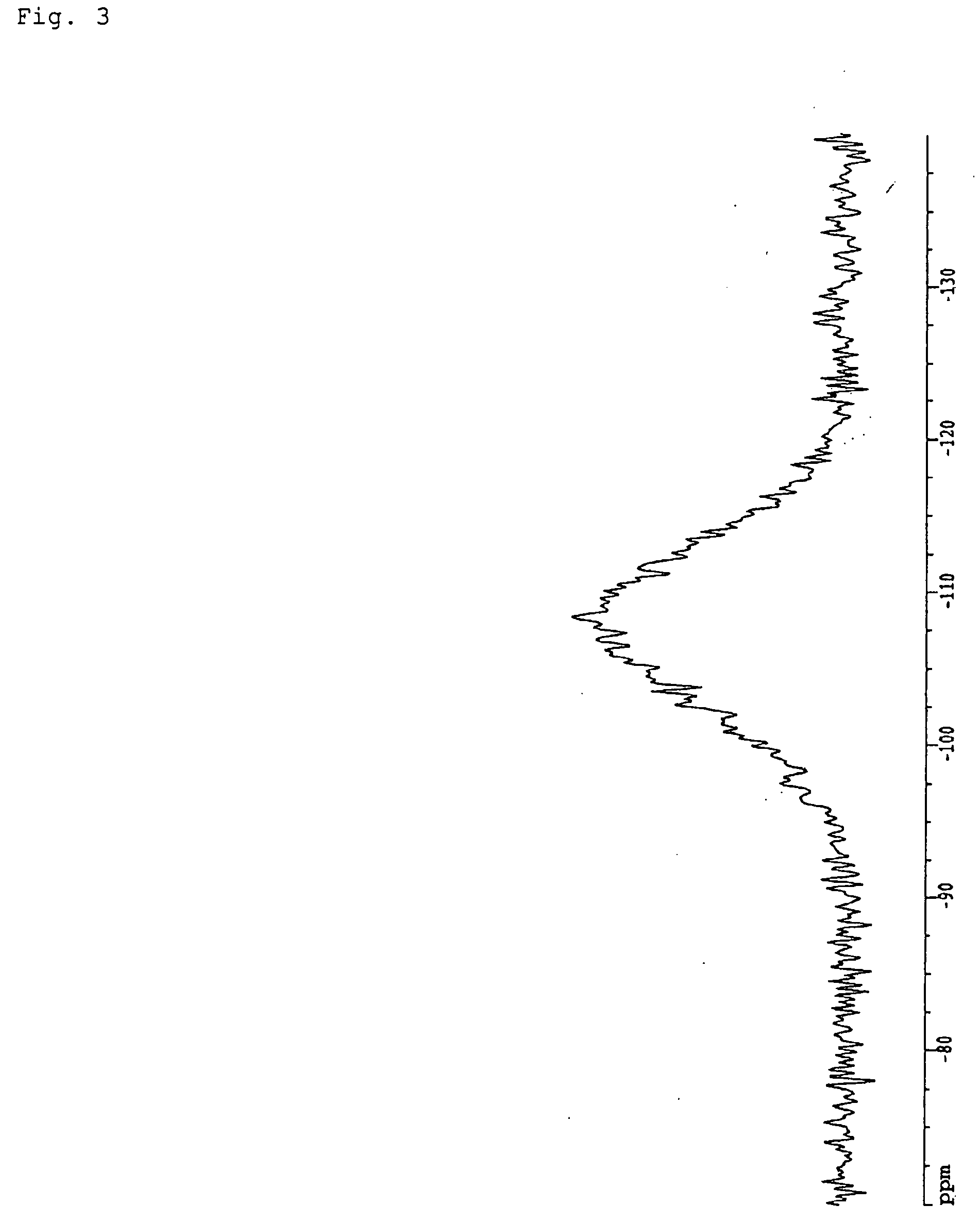Fire retardant resin composition, method of its production, shaped articles comprising the same, and silica
a technology of fire retardant resin and composition, which is applied in the direction of tyre parts, greenhouse cultivation, group 5/15 element organic compounds, etc., can solve the problems of reducing the mechanical properties and moisture resistance of shaped articles, affecting the environmental impact, and affecting the mechanical properties of phenolic resin-cured epoxy resin produced by this method, etc., to achieve the effect of reducing adverse effects, high degree of fire retardancy, and favorable physical properties and heat resistan
- Summary
- Abstract
- Description
- Claims
- Application Information
AI Technical Summary
Benefits of technology
Problems solved by technology
Method used
Image
Examples
example 1
[0155] To a 2 L of four-necked flask equipped with a gas inlet, a Dean-Stark trap and a stirring rod was charged 302.6 g of p-xylylene glycol, 687.0 g of phenol and 12.6 g of p-toluenesulfonic acid, and the temperature was increased in a nitrogen gas stream. While collecting the water which began to form around 115° C. with the trap, the temperature was increased to 150° C. and maintained for 6 hours. The formation of water ceased when 79 g of water was recovered. Then the reaction system was cooled to 60° C. and 176 g of methanol was added. Two PTFE tubes were inserted into the reaction mixture in the four-necked flask, and with the temperature being maintained at 60° C., 336.4 g of tetramethoxysilane and 157.8 g of water were fed through the respective tubes by means of peristaltic roller pumps over 4 hours. After the feeding, the reaction system was maintained at 60° C. for 4 hours. Then, under nitrogen stream, the temperature was increased again and while trapping the residual w...
example 2
[0156] To a 1 L of four-necked flask equipped with a gas inlet, a Dean-Stark trap and a stirring rod was charged 432.9 g of phenol, 172.2 g of benzoguanamine and 179.2 g of 37% formalin, and while the white opaque solution was stirred in a nitrogen gas stream, 9 ml of aqueous ammonia solution was added dropwise. When the reaction system had become transparent, the temperature was increased to about 80° C. and the system was incubated under stirring for 4 hours. The temperature of the reaction mixture was increased again. With water which began to be distilled off at about 100° C. being collected with the trap, the solution was heated and maintained at 180° C. for 4 hours. The formation of water ceased when 160 g of water was recovered. Therefore, the reaction mixture was cooled to 60° C. and 100 g of methanol and 8.3 g of acetic acid were added. Then, two PTFE tubes were inserted into the reaction mixture in the four-necked flask, and with the temperature being maintained at 60° C.,...
example 3
[0158] To a 2 L of four-necked flask equipped with a gas inlet, a Dean-Stark trap and a stirring rod was charged 492.2 g of 4,4′-diacetoxymethylbiphenyl, 517.6 g of phenol and 25.1 g of strong acid ion exchange resin (product name “Amberlyst 15 Dry”, product of Rohm & Haas Co.), and the increase of temperature was started under nitrogen stream. Acetic acid began to form around 140° C. and while trapping this acetic acid with the trap, the reaction solution was heated to 170° C. and maintained for 8 hours. The reaction ceased when 195 g of acetic acid was recovered. Therefore, the reaction mixture was cooled and the ion exchange resin was recovered by filtration. To the filtrate was added 109.0 g of methanol, and the mixture was returned to the flask. Then, two PTFE tubes were inserted into the reaction mixture in the four-necked flask, and with the temperature being maintained at 60° C., 251.2 g of tetramethoxysilane and 142.0 g of 15% aqueous ammonia solution were fed through the r...
PUM
| Property | Measurement | Unit |
|---|---|---|
| Temperature | aaaaa | aaaaa |
| Temperature | aaaaa | aaaaa |
| Particle diameter | aaaaa | aaaaa |
Abstract
Description
Claims
Application Information
 Login to View More
Login to View More - R&D
- Intellectual Property
- Life Sciences
- Materials
- Tech Scout
- Unparalleled Data Quality
- Higher Quality Content
- 60% Fewer Hallucinations
Browse by: Latest US Patents, China's latest patents, Technical Efficacy Thesaurus, Application Domain, Technology Topic, Popular Technical Reports.
© 2025 PatSnap. All rights reserved.Legal|Privacy policy|Modern Slavery Act Transparency Statement|Sitemap|About US| Contact US: help@patsnap.com



